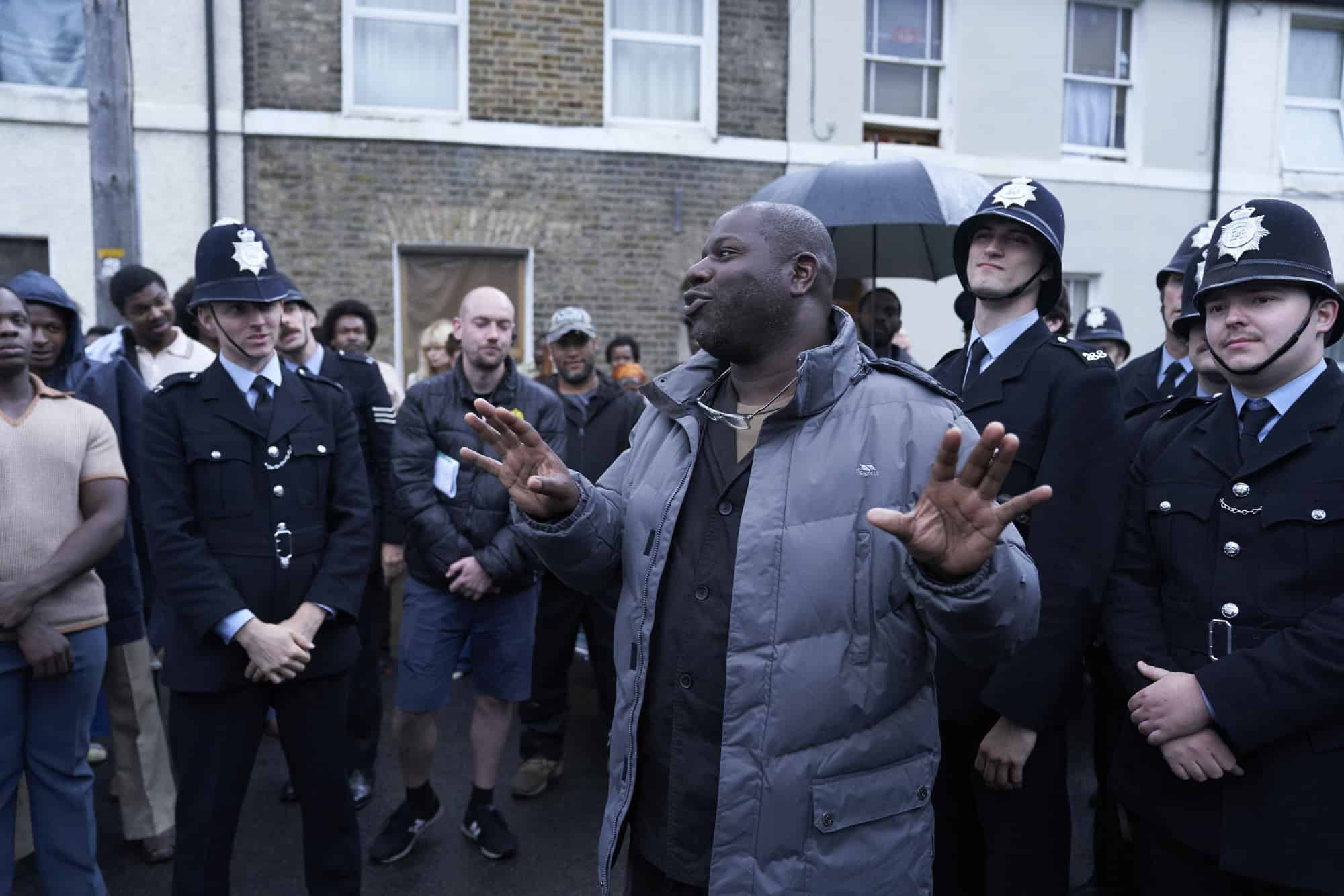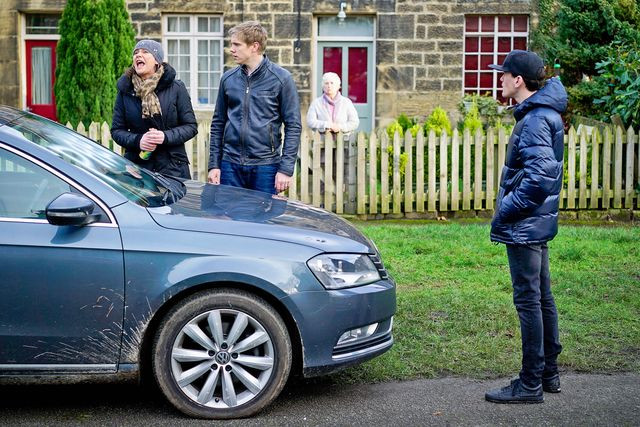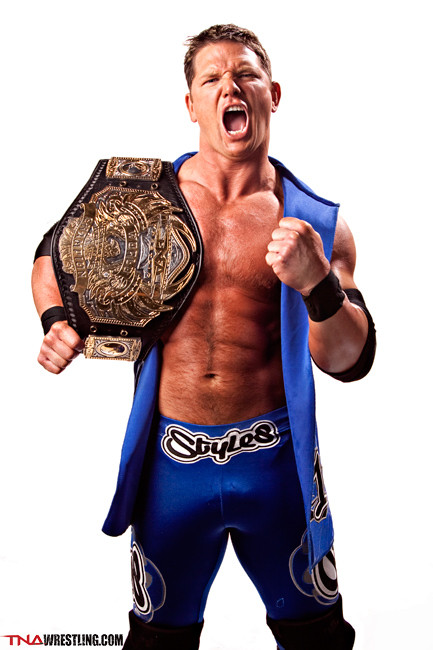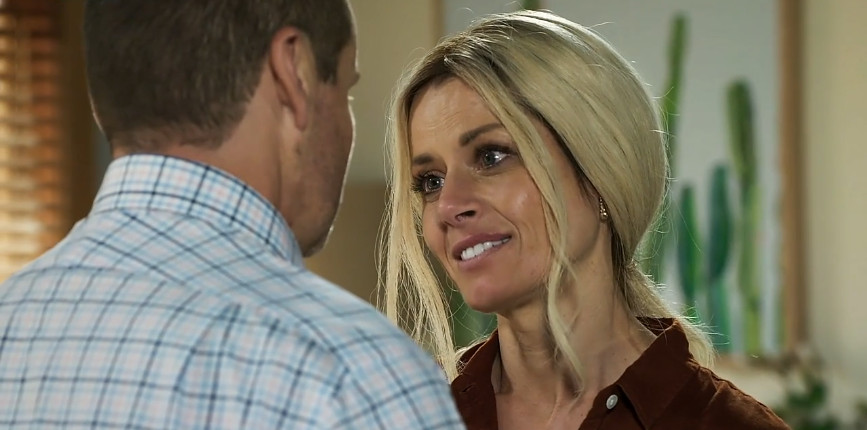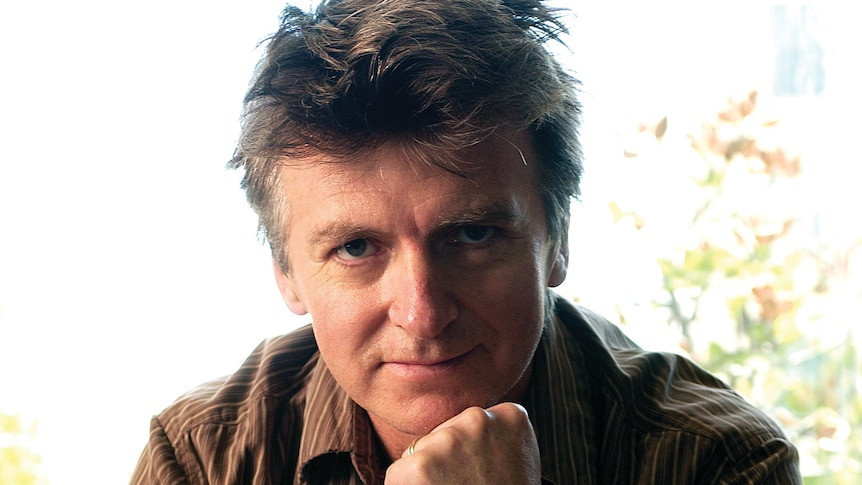From All Quiet on the Western Front to 1917, Dunkirk to Saving Private Ryan, explosive, sweeping epics about the First and Second World Wars have long had a reputation for winning Oscars—and now, it looks like the latest drama from Academy Award winner Steve McQueen, the soaring Blitz, is about to do the same.
Starring four-time Oscar nominee Saoirse Ronan; Beach Rats, Triangle of Sadness, and Babygirl breakout Harris Dickinson; music legend Paul Weller; This Is England’s Stephen Graham; The Crown’s Alex Jennings; I, Daniel Blake’s Hayley Squires; and newcomer Elliott Heffernan, it’s the heart-pumping tale of George (Heffernan), a nine-year-old boy caught up in the indiscriminate bombing of London during World War II, whose mother, Rita (Ronan), sends him to safety in the English countryside. When he fails to arrive at his destination, she embarks on a desperate search. George, meanwhile, defiant and determined to return home to his mother and grandfather, Gerald (Weller), in east London, sets off on an adventure of his own—and finds himself in grave danger, fleeing from crashing planes, collapsing buildings, and falling bombs.
There’s also a prestigey gloss to the whole thing thanks to an exceptional, Oscar-winning behind-the-scenes team: production designer Adam Stockhausen, who collaborated with McQueen on 12 Years a Slave and Widows, and regularly works with Wes Anderson, is responsible for the stunning reconstruction of ’40s-era London; costume designer Jacqueline Durran (Pride & Prejudice, Atonement, Anna Karenina, Little Women, Small Axe, Spencer, Barbie) has created the sharp skirt suits and tea dresses; and Hans Zimmer provides the rousing score.
Thankfully, we don’t have long to wait: Blitz hits the big screen on November 1, before landing on Apple TV+ on November 22. After that, it’ll be time to sit back, relax and watch the accolades roll in.
The Inspiration Behind Blitz
“I just wanted to know who he was … what was his story?” the Oscar-winning 12 Years a Slave filmmaker recalls thinking when Deadline met up with him to talk about his thrilling, deeply personal new movie Blitz. It’s set in 1940 wartime London, when Hitler’s Luftwaffe unloaded its payloads and pounded the city seemingly nonstop for eight months.
The following night, October 10, it’s the New York Film Festival’s closing-night feature. Blitz then will debut November 1 in select cinemas before premiering globally on Apple TV+ on November 22. Apple launch the first Blitz trailer tomorrow.
An Authentic Portrayal of Wartime London
Blitz, which re-creates London at the height of the German blitzkrieg, or “lightning war,” eschews the Dickie Attenborough school of Britain’s World War II films — the ones stuffed with stiff-upper-lip, pasty-faced types parading about in starched white shirts and showing off their military regalia.
McQueen wasn’t having any of what he calls “cardboard cutout” Brits in Blitz, which he researched thoroughly. Many of the film’s characters — air-raid wardens, musicians and folk who managed the bomb shelters, especially ones located deep in the tunnels of London Underground stations — are based on real people.
A Young Boy's Perspective on War
He asks me to think of a child being around parents when they row violently. “It’s the worst thing in the world that can ever happen to a child,” he says. “So imagine a small child in war? It becomes three times as amplified.”
A Deeply Personal Story
“We have made this world that this child has to live through; it’s a world we’ve made one way or another,” McQueen laments.
Rita, the boy’s mother (played with heart and gritty determination by Saoirse Ronan) raises him along with her dad (a fine Paul Weller) in a terrace house they all share in East London. The war is perceived through Rita’s eyes as well.
McQueen had a language coach and a movement director come in to adjust their speech patterns to match the period. “Elliott and the other child actors were playing children who’d never seen a mobile phone or been on the internet, so we had to shape their body language. They had to learn how to hold a cup of tea and not a mobile.”
The filmmaker had to talk to Elliott about war. “I think it’s surreal,” he says.
“To normalize the atrocities of war is strange, isn’t it? And then we have to talk to a prepubescent child about what the world is. It’s hard. How do we normalize nonsense?” he demands, his voice rising as he bangs the table in the back booth of the Dean Street Cafe in Soho.
He asks again: “How do we normalize the extremes of reality?”
How Elliott’s George responds to these realities is what the movie’s about, says McQueen.
A Family in Wartime
“The Blitz brought people together in a way that it had never happened before. Extraordinary circumstances brought these people together. I mean, women were liberated, sexually liberated, liberated within,” McQueen says, pointing to evidence in a trove of scholarly studies, including Joshua Levine’s insightful The Secret History of the Blitz.
Levine collaborated with McQueen on Blitz. One real-life character mentioned in the book was E.I. Ekpenyon, a law student from Nigeria who became an air-raid warden in Marylebone.
His name and story is fictionalized in Blitz. He’s still an air-raid warden, but he’s called Ife, translated from the Ibo language to mean “love.” And Love is played with uncommon grace by Benjamin Clémentine (Dune: Part One, The Morning Show).
A Story of Resilience and Hope
McQueen tells me his movie “is about cinema. It’s about how to be enthralled, to be entertained. It’s not necessarily there to educate,” he says. If you want that, ”then read a book.”
He calls Blitz a fairy tale, “and a very dark one.”
It’s “the Brothers Grimm. And that’s the journey that George goes on.”
McQueen’s clearly sickened by war, but he’s interested “in the evidence of things not seen.”
He returns to the subject often because he believes, as do I, that art gives us permission to discuss the unimaginable.
Blitz, with its thrilling, exciting, sometimes emotional heart-tugging elements, feels way more accessible than his acclaimed dramas 12 Years a Slave, Shame and Hunger.
“I wanted to make a picture which could reach all kinds of people. It’s important, in some ways, not to dumb down anything and to embrace every aspect of society — feature films can do that. And I’m interested in cinema,” he says. “It’s like music, it can connect to everybody.”
A Must-See for Film Fans
First time I saw Blitz was back in June. McQueen screened the film for me on a big screen in one of the screening rooms in Warner Bros’ cavernous post-production complex that recently opened in Soho. The first image startled me. There were firefighters tackling a blaze in the aftermath of a bombing raid. The hose kept jerking as if it were alive. It was uncontrollable.
McQueen explains that the hoses were made of canvas and they leaked. Equipment back then was “terrible.”
When he wrote the script, he says, he was thinking “of someone fighting a fire-breathing dragon with a garden hose. That’s what it was.”
I saw Blitz again a few weeks later over at Apple’s London headquarters in Battersea on the south side of the Thames, and even though the film was beamed onto a much smaller screen, that scene still captivates, as do many others.
Next for McQueen is a project with Amazon. Which he can’t talk about. And he wants to set anther film in London. “I want to use London the way Scorsese uses New York.”




